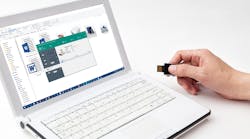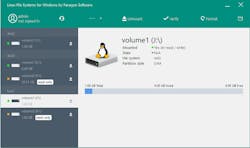I do a good bit of cross platform development using Linux and Microsoft Windows. I can access Windows partitions from Linux using drivers that handle the FAT and NTFS file systems. Linux has its own file systems, including Ext, XFS, and BTRFS. Unfortunately, Windows did not have support for these Linux file systems—until now.
Paragon Software now sells Linux File Systems for Windows (see figure) for under $20/system. I had access to the disk partitions on my dual-boot, Windows/Fedora Linux system after installing the software.
Paragon Software’s Linux File Systems for Windows provides read/write access to Linux EXT file systems and read-only access to XFS and BTRFS file systems.
The user interface handles mounting and configuration. It also shows a partition’s status, including the amount of free space. The system handles fixed and removable drives. This is important as using it with flash drives or SD cards. I run into this frequently when working with Linux on platforms like the Raspberry Pi that use a microSD card. Now I can edit configuration files without having to fire up a Linux virtual machine when I am working in Windows or use one of my other Linux machines to access the microSD card.
The system can format a partition as an Ext2, Ext3, and Ext4 file system. It cannot create an XFS or Btrfs file system. It supports 64bit, dir_index, extent, extra_isize, ext_attr, flex_bg, and has_journal attributes, but not bigalloc, journal_dev, and meta_bg, at the moment. The read-only file attribute works and Linux hidden files are ones that start with a period. Toggling the hidden checkbox does not rename the file, but renaming a file with a leading period does hide it. The Windows file manager does recognize.
Linux File Systems for Windows does support the Linix Logical Volume Manager (LVM) partitions. This allows a disk partition to contain multiple logical partitions. LVM differs from an extended partition because LVM volumes have significantly more functionality, including the ability to be resized after they are created. One of the microSD cards I use has a primary Ext3 partition with the boot code and an LVM partition with an Ext3 and an XFS LVM partition. Of course, the XFS is read-only under Windows, but both Ext3 partitions are read-write.
The system cannot handle Linux users and groups since Linux is not running. Windows users are essentially running as the root user. This can have implications in terms of editing and configuring files, but normally one would deal with security within the context of the host operating system.
Users of the earlier Paragon ExtFS for Windows get a free upgrade. A license works on only one machine at a time, but it is possible to move it from one device to another.



